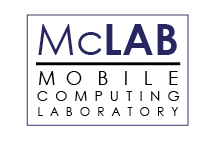Difference between revisions of "Draft:Meeting student technology expectations"
| Line 50: | Line 50: | ||
* South Central College | * South Central College | ||
* Winona State University | * Winona State University | ||
| + | |||
| + | ===Resources=== | ||
| + | * https://itconnect.uw.edu/learn/research/mobile-device-usage-2015/ | ||
==Results== | ==Results== | ||
Revision as of 19:10, 23 June 2017
The big question
Are we meeting students' technology expectations?
Overview
New students are entering our institutions with ever-growing technology expectations. Their exposure to technology in the K-12 system and in their everyday lives causes their needs and wants to evolve, and they carry these expectations with them as they move into higher education. The purpose of this project is to open the conversation around whether we as institutions of higher education are meeting these expectations.
Goals and objectives
Compile the technology expectations new students bring to higher education
- Survey prospective students from K-12 to determine their technology expectations.
- Survey students at the end of their first year in higher education to collect their experiences with technology at their school.
- Examine outside data sources (e.g. ECAR) for further insight.
Determine whether higher education is meeting student expectations
- Examine reduced data for areas of compliance and non-compliance with student expectations.
- Generate a list of recommendations for technology inclusion in curricular design.
Piloting the idea
Pilot work
Steps in the pilot work:
- Collect data from freshmen at the end of their first year.
Poll students at the end of their first year to collect data on how technology was used in their classes and if it met their expectations. (Expectations is defined as their daily use of technology in combination with how they experienced technology in K-12.) - Examine data collected from other sources.
Sources outside of the surveys in this project may include relevant data.- Find potential sources for relevant data. Among these sources are the EDUCAUSE Center for Analysis and Research (ECAR) and the Winona State Assessment Day surveys.
- Examine the collected data for relevance.
- Include relevant data in project data.
- Establish a baseline for current students.
Reduce the collected data into a meaningful snapshot of how current students feel about technology usage in higher education. - Survey students in K-12.
Poll students are several points in their K-12 careers to collect data similar to that collected in Step 1 above. School districts can come from anywhere is the state, but it is most meaningful when the K-12 data comes from schools that feed students to the colleges and universities being studied in this project. - Reduce the K-12 student data.
Find common expectations across K-12 samples. - Create baseline for prospective student expectation.
This baseline supplies input into the curricular design and recruitment process.
Steps 1, 2, and 3 supply a baseline for how current students in higher education feel their technology expectations have been met. This is important for the following reasons:
- Gauge how well expectations are met.
- Inform course design and curriculum writing.
- Guide the design of questions for K-12 students in step 3.
Steps 4, 5, and 6 generate the expectation data for students that are not yet in higher education. This is important for the following reasons:
- Define what tomorrow's students are looking for when examining colleges and universities.
- Inform the writing of curriculum.
Data from current higher-education students is collected from both colleges and universities to ensure a broad picture of expectation. Data collected from K-12 students will come from feeder school districts to the colleges and universities polled in Step 1.
Participants
The following schools are contributors to this pilot:
- MSU - Mankato
- South Central College
- Winona State University
Resources
Results
Assessment Vehicle
Participants were surveyed for their reactions and experiences. A Qualtrics survey was distributed to all participants.
Survey Questions
- TBS
Recommendations and Observations
More Information
Want more information on the McLAB or have an idea you would like to pursue? Contact Norb Thomes at (507) 457-5043 or nthomes@winona.edu.
Overview of the McLABRead the full overview of the Mobile Computing Laboratory project. |
Related Wiki Topics |
